One of the most fundamental skills in the world of editing is the ability to modify aspect ratio and resolution as needed: with a multitude of social media platforms with different requirements, and screens of different sizes and shapes, images and videos are now presented in different ways every day. You and I might watch the same content on different devices or platforms and have a totally different experience.
As these dimensions shift, it is crucial for creators to understand how to make the most of their content, regardless of how their audience experiences it. For many filmmakers and editors, Adobe Premiere Pro is the go-to software for the task.
Mastering how to adjust the aspect ratio in Premiere Pro is a must if you want to upgrade your editing skills. To achieve the best results, you must first determine the properties of your image, such as frame size or resolution and frame shape or aspect ratio. Remember: resolution and aspect ratio are intimately related features but are ultimately two different things. To learn more about aspect ratio and resolution, see What is Aspect Ratio?
So let’s see how you can change aspect ratio using Premiere Pro!
To change the aspect ratio of a video in Premiere Pro, you need to generate a new sequence, go to the Settings option, and tweak the frame size directly from there.
Now, let’s delve deeper into the process: there are two main ways to change aspect ratios in Premiere Pro. One is for a brand new sequence, while the other is for a sequence you are already editing.
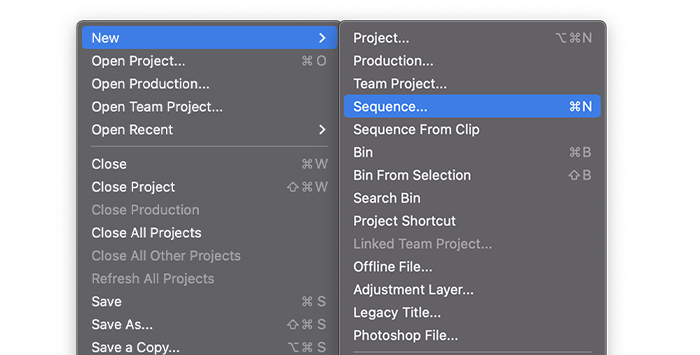
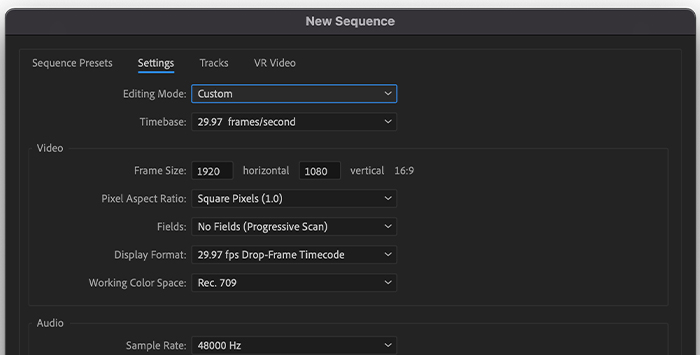

Now, your preferred aspect ratio for the new sequence should be all set.

If you’re in the middle of the post-production process, you can also use the Premiere Pro feature called “Auto Reframe Sequence,” which provides plenty of preset aspect ratios to choose from.
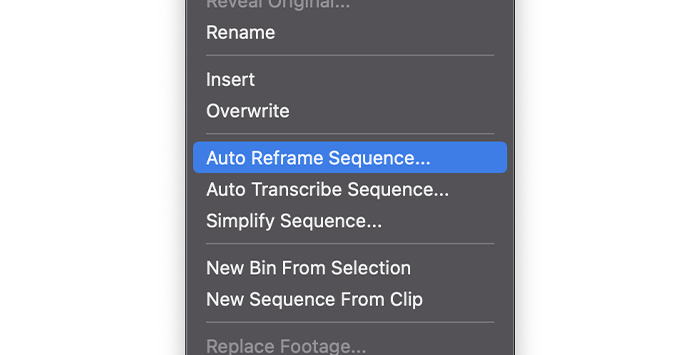
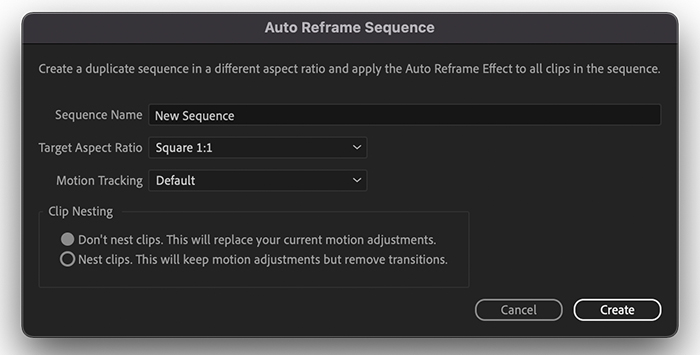
After modifying the aspect ratio, Premiere Pro should automatically analyze and generate a mirrored sequence with the new settings. While Premiere Pro generally does a good job of keeping the main subject of your footage in the frame, it’s always a good idea to review your clips and ensure they have the correct aspect ratio. To do so, use the “Motion” tab located on the “Effects Controls” panel to adjust the frame parameters as needed.
| Aspect Ratio | Aspect Ratio | Width | Height | |
| Old TV Look | 4:3 | 1.33:1 | 1920 | 1443 |
| Widescreen 1080p | 16:9 | 1.78:1 | 1920 | 1080 |
| Widescreen 4K UHD | 16:9 | 1.78:1 | 3840 | 2160 |
| Widescreen 8K UHD | 16:9 | 1.78:1 | 7680 | 4320 |
| 35mm Motion Picture StandardHollywood Movies for 4K UHD | 1.85:1 | 3840 | 2075 | |
| Widescreen Cinema StandardHollywood Movies for 4K UHD | 2.35:1 | 3840 | 1634 | |
| IMAX for 4K UHD | 1.43:1 | 3840 | 2685 | |
| Square | 1:1 | 1:1 | 1080 | 1080 |
| YouTube Shorts, Instagram Stories, Vertical Videos | 9:16 | 0.56:1 | 1080 | 1920 |
Source: Wikipedia
While editing, if you import clips with a different aspect ratio into a project that uses another aspect ratio, a clip mismatch warning will appear. In that case, you have the option to either “Keep existing settings” to maintain the original aspect ratio, or you can decide how to reconcile the conflicting aspect ratios.
If you choose to keep the original settings, the video will either be zoomed in or out to fit the footage and fill the screen. To reconcile the conflicting aspect ratios, you can apply techniques such as letterboxing and pan and scan; video makers use letterboxing and pillarboxing to preserve a video’s initial aspect ratio when it has to be displayed on a screen with a different or incorrect aspect ratio.
These techniques are also used for movies with multiple aspect ratios. Since different media forms and screens have different video recording standards, mismatches are likely to happen, and when they do, black bars appear to fill the blank spaces.
In short, “Letterboxing” refers to the horizontal black bars at the top and bottom of the screen, which appear when the content has a wider aspect ratio than the screen. “Pillarboxing,” on the other hand, refers to black bars on the sides of the screen, which occur when the filmed content has a taller aspect ratio than the screen.
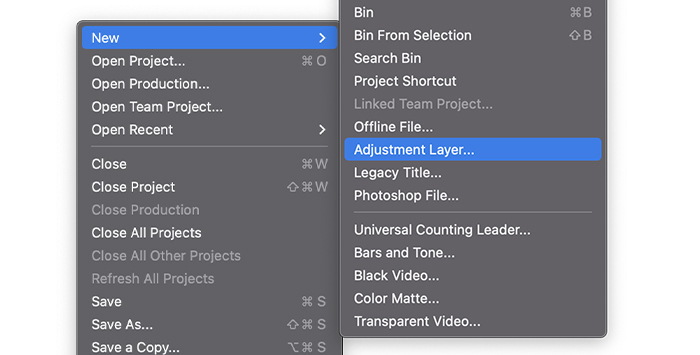


Similarly, Pan and Scan is a technique used to reconcile clips of different aspect ratios in a project.
Unlike letterboxing, however, where all of the footage is preserved, the Pan and Scan method preserves only a portion of the frame, typically the most important one. This technique is similar to imposing a vertical 16:9 film on a 4:3 screen, where only the horizontal part of the 16:9 frame that overlaps with the 4:3 frame is preserved along with the key action while disregarding the “unimportant” parts.
If you use Premiere Pro, chances are you’re already familiar with the concepts of frame and pixel aspect ratios. These ratios apply to both still and moving pictures and vary depending on the video recording standards used.
For example, you can choose to record videos for television in either a 4:3 or 16:9 frame aspect ratio. When creating a project in Premiere Pro, you can select the desired frame and pixel aspect ratios.
It’s important to note that once these values are set, they cannot be changed for that project. However, the aspect ratio of a sequence can be modified, and assets created with differing aspect ratios can still be incorporated into the project.
The frame aspect ratio refers to the ratio of an image’s width to its height. For example, the frame aspect ratio for DV NTSC is 4:3 (or 4.0 width by 3.0 height), while a standard widescreen frame has a ratio of 16:9.
Many cameras offer a widescreen option that uses the 16:9 aspect ratio for recording. In Premiere Pro, you can adjust the aspect ratio of a video using motion effect settings such as Position and Scale. This allows you to apply techniques like letterboxing or pan and scan to change the aspect ratio of the video.
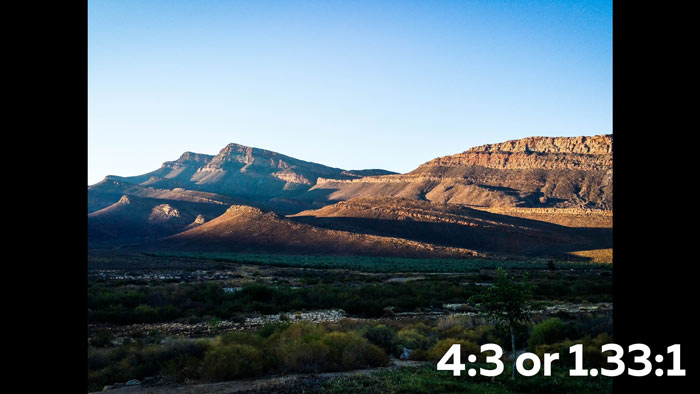




Simply put, the pixel aspect ratio is the width-to-height ratio of a single pixel in a frame. This ratio varies because different television systems have different assumptions about how many pixels are required to fill a frame.
For example, a 4:3 aspect ratio frame is defined as 640×480 pixels in several computer video standards, resulting in square pixels with a 1:1 aspect ratio. However, video standards like DV NTSC define a 4:3 aspect ratio frame as 720×480 pixels, resulting in more angular, rectangular pixels.
If you need to change the pixel aspect ratio in Premiere Pro, simply go to the Pixel Aspect Ratio section, select an aspect ratio from the dropdown list, and then click OK.
Pixel aspect ratio | When to use | |
| Square pixels | 1.0 | Footage has a 640×480 or 648×486 frame size, is 1920×1080 HD (not HDV or DVCPRO HD), is 1280×720 HD or HDV, or was exported from an application that doesn’t support nonsquare pixels. This setting can also be appropriate for footage that was transferred from film or for customized projects. |
| D1/DV NTSC | 0.91 | Footage has a 720×486 or 720×480 frame size, and the desired result is a 4:3 frame aspect ratio. This setting can also be appropriate for footage that was exported from an application that works with nonsquare pixels, such as a 3D animation application. |
| D1/DV NTSC Widescreen | 1.21 | Footage has a 720×486 or 720×480 frame size, and the desired result is a 16:9 frame aspect ratio. |
| D1/DV PAL | 1.09 | Footage has a 720×576 frame size, and the desired result is a 4:3 frame aspect ratio. |
| D1/DV PAL Widescreen | 1.46 | Footage has a 720×576 frame size, and the desired result is a 16:9 frame aspect ratio. |
| Anamorphic 2:1 | 2.0 | Footage was shot using an anamorphic film lens, or it was anamorphically transferred from a film frame with a 2:1 aspect ratio. |
| HDV 1080/DVCPRO HD 720, HD Anamorphic 1080 | 1.33 | Footage has a 1440×1080 or 960×720 frame size, and the desired result is a 16:9 frame aspect ratio. |
| DVCPRO HD 1080 | 1.5 | Footage has a 1280×1080 frame size, and the desired result is a 16:9 frame aspect ratio. |
Source: Adobe
Whether you’re a beginner or an experienced video editor, being able to change the aspect ratio of your videos is a valuable skill that can upgrade the quality of your content.
Premiere Pro is a popular video editing software that is widely used by prosumers and professional studios alike, but it can be challenging if you’re not accustomed to it. If you’re struggling with different aspect ratios for a new or existing sequence, this guide should help you simplify the process with minimal hassle.